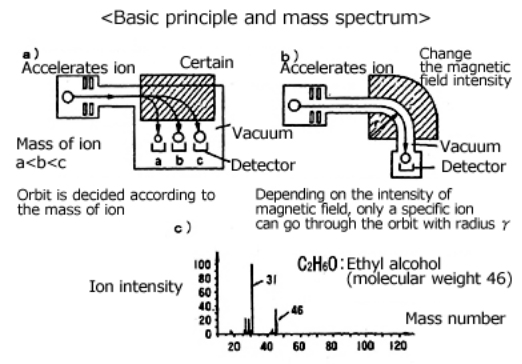- enquiry@labindia.com
- 022 - 2598 6000
Nano Bio Process
- AMTECH, Germany
- AMETEK, USA
- Arrayjet, UK
- Bettersize
- Bioinicia, Spain
- Carl Zeiss, Germany
- CTL Analyzers, USA
- CEDAR, UK
- DANI Instruments, Italy, Swiz & USA
- Jeol, Japan
- Micromeritics, USA
- Nanonics - Israel
- Nanomechanics, USA
- Nuance Communication, Ireland
- ProUmid
- Renishaw - UK
- Sentech - GmbH
- SEPRAGEN,USA
- Techcomp Singapore Pte. Ltd., Singapore
- Taylor Hobson, USA
- Walter UHL GmbH, Germany
- WPI, USA

Jeol
On the basis of "Creativity" and "Research and Development", JEOL positively challenges the world's highest technology,thus forever contributing to the progress in both Science and Human Society through its products.
With a new concept of “Solutions for Innovation”, we aim to become the “Only One Company” offering solutions that cannot be found anywhere else, will continue our efforts to contribute to scientific technology worldwide

A Mass Spectrometer (MS) is used to precisely measure the mass (weight) of individual chemical compound in a substance and to identify the compounds and its quantity. The basic principle of MS utilize the ions formed. By accelerating an ion (an atom or molecule with an electrical charge) to a certain speed, and passing it through a magnetic field, the path of the ion will be deflected by the magnetic field in a certain manner. The amount of deflection depends on the intensity of the magnetic field and the mass number of the ion. A similar principle is used in the Braun tube of an old cathode ray TV, in which electrons are deflected by passing them through a magnetic field.
Suppose that we accelerate various ions from the left with the same energy, as shown in Fig. a). If we set the intensity of the magnetic field to a constant value, the path of the smaller mass (lighter) ions will be deflected by the magnetic field more than the heavier ions, so they arrive at the detector at different positions. Therefore, by obtaining mass spectrum that detects the position at which the ion arrives, the kind of the compound is known (qualitative analysis), and it is also possible to determine the quantity (quantitative analysis). In an actual MS the ion path is kept constant, and the strength of the magnetic field is varied, as in Fig. b).This makes it possible to measure the type and quantity of various ions using one detector. What has been detected is called as mass spectrum and is displayed as a graph c) with many peak groups. Usually, the electron charge mass ratio (m/z) is indicated on the horizontal axis, and ion intensity (showing quantity) is indicated on the vertical axis.
Copyright ? 2020 Labindia-Instruments | SEO and Web Design by Product Search India
